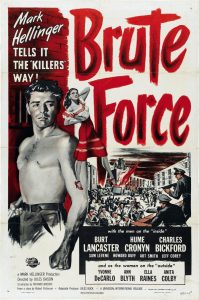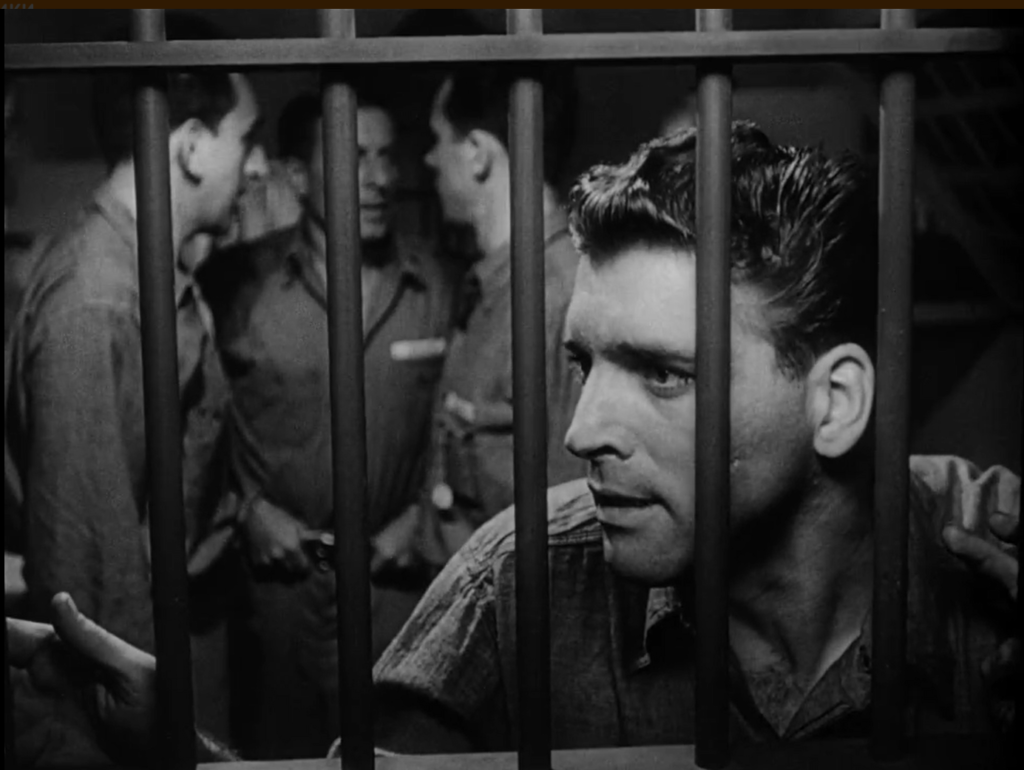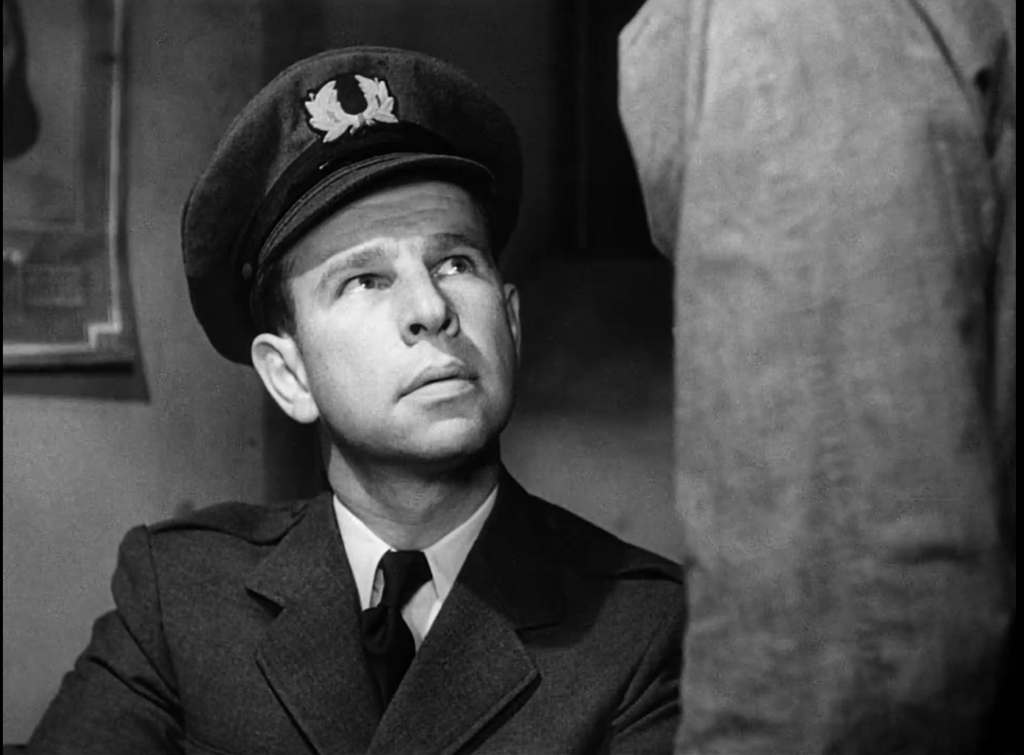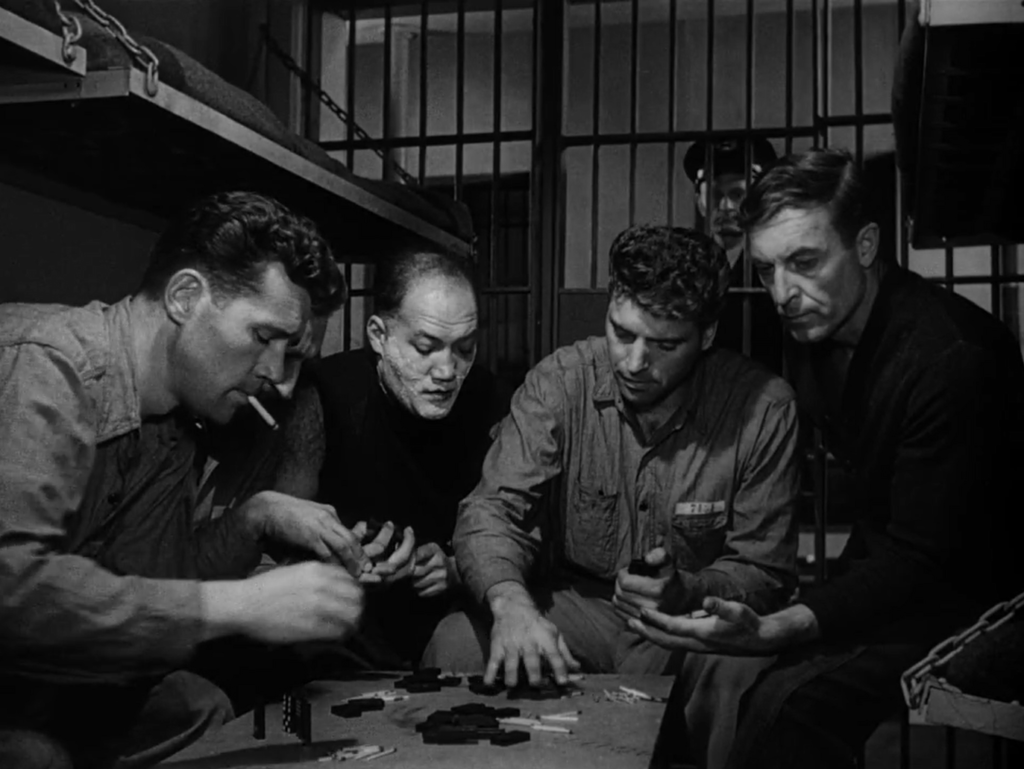“Those gates only open three times: when you come in, when you’ve served your time, or when you’re dead.”
|

Synopsis:
A group of prisoners — led by Burt Lancaster — rebel against a sadistic prison captain (Hume Cronyn) who is hell-bent on making their lives miserable.
|
|
Genres, Themes, Actors, and Directors:
- Ann Blyth Films
- Burt Lancaster Films
- Charles Bickford Films
- Ella Raines Films
- Escape
- Hume Cronyn Films
- Jules Dassin Films
- Prisoners
- Ruthless Leaders
- Yvonne De Carlo Films
Review:
Prison breaks have been a cinematic mainstay for decades, and this relatively early outing by French director Jules Dassin is regarded by many as one of the best. However, other than featuring hunky-yet-stoic Burt Lancaster in a star-making role:

and Hume Cronyn in an atypically sadistic performance:

it doesn’t offer anything new to an overly familiar narrative trope. In order to successfully convince audiences to root for Lancaster and his cellmates, the prisoners are all presented as sympathetic and/or wrongly accused, while Cronyn himself is simply a power-tripping Hitler-stand-in (clearly meant to appeal to post-war audiences). The film’s primary redeeming feature is William Daniels’ atmospheric cinematography, which successfully positions this as a prime example of prison-drama-as-noir.
Redeeming Qualities and Moments:
- The powerful early scene in which a stoolie (James O’Rear) is crushed to death in a prison workroom

- William Daniels’ noir-ish cinematography

Must See?
No. Listed as a film with Historical Importance in the back of Peary’s book.
Links:
|
One thought on “Brute Force (1947)”
Agreed; ultimately not a must.
There is a considerable number of prison films – when one considers the limited scope of them (escape, corruption/reform, general discontent of inmates), it’s apparent how the musts among them can really be narrowed down. (That is, unless the setting intrigues you.)
As compensation for the genre’s limits, the story here is opened up by including the backstory (via flashbacks) of four of the prisoners. At least that gets viewers out of the prison – which is not always easy to do in such films. But, again, these details don’t work toward making ‘Brute Force’ a standout.
If anything makes the film particularly noteworthy, it’s Cronyn’s turn as Capt. Munsey – which easily reads as gay. (I somehow see him as a Roy Cohn kind of guy.) While it’s hard to decipher the original intent of storywriter Robert Patterson, it’s not difficult to note the line of screenwriter Richard Brooks’ interest in marginally gay men: ‘Crossfire’ (Brooks’ original novel ‘The Brick Foxhole’ hinged on homosexuality), ‘Cat on a Hot Tin Roof’, ‘In Cold Blood’, ‘Looking for Mr. Goodbar’.)